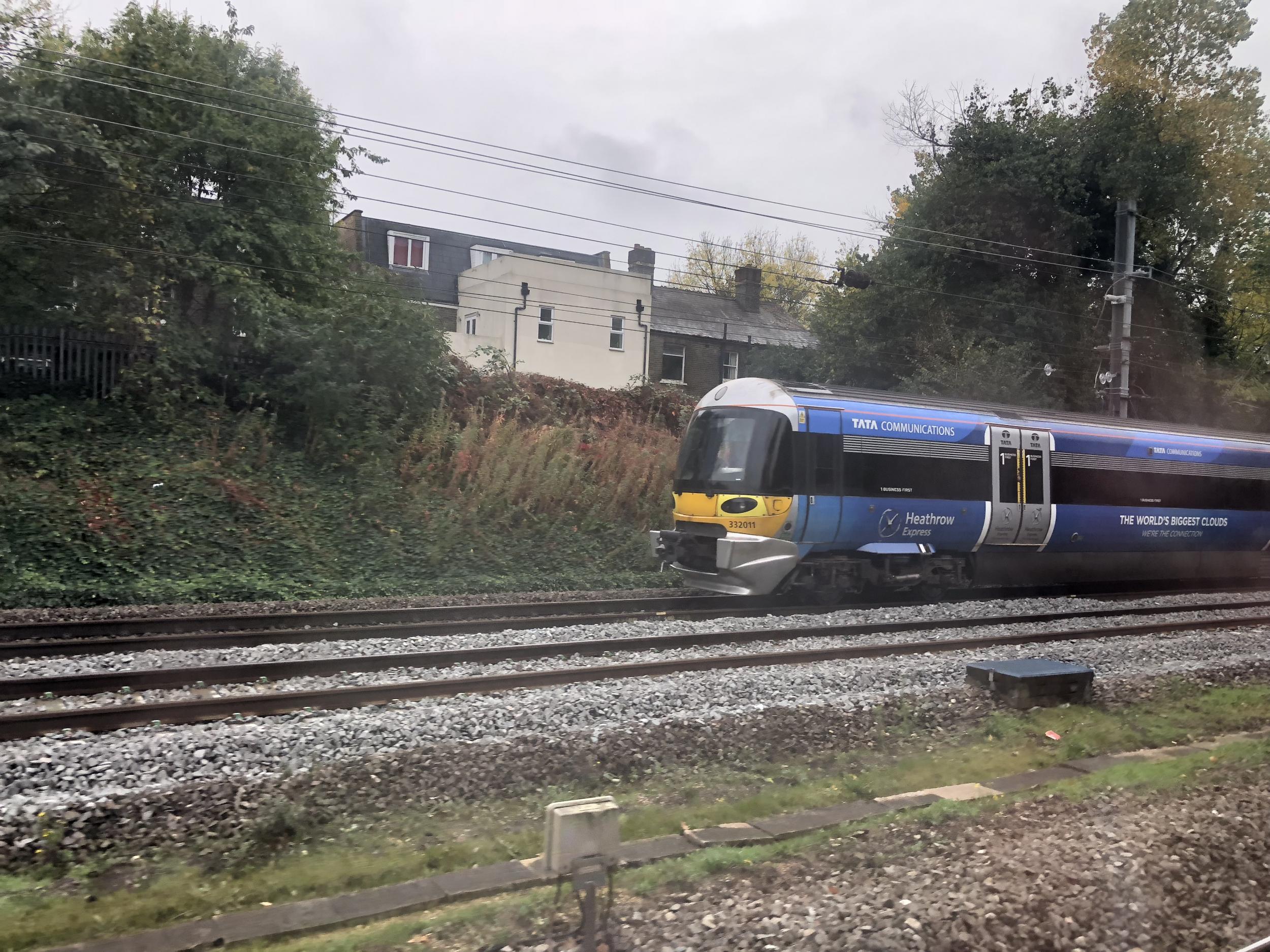Great Western Railway experiences rail chaos as overhead line damage disrupts thousands of train journeys
Our travel correspondent spent six hours at London Paddington waiting for the first train out
Your support helps us to tell the story
From reproductive rights to climate change to Big Tech, The Independent is on the ground when the story is developing. Whether it's investigating the financials of Elon Musk's pro-Trump PAC or producing our latest documentary, 'The A Word', which shines a light on the American women fighting for reproductive rights, we know how important it is to parse out the facts from the messaging.
At such a critical moment in US history, we need reporters on the ground. Your donation allows us to keep sending journalists to speak to both sides of the story.
The Independent is trusted by Americans across the entire political spectrum. And unlike many other quality news outlets, we choose not to lock Americans out of our reporting and analysis with paywalls. We believe quality journalism should be available to everyone, paid for by those who can afford it.
Your support makes all the difference.Britain’s luckiest rail passenger is probably James Dove, a London lawyer. At lunchtime, he turned up by Tube at Paddington station blissfully unaware that no trains had departed all day on the Great Western Railway to the Thames Valley, the west of England and south Wales.
But at platform 11 he simply stepped aboard the delayed 12.27pm to Didcot Parkway. It was the first train to leave Paddington after overhead line damage seven miles west caused all routes out of the station to be closed.
“I was given an urgent case in Reading, so I just headed to Paddington,” he told The Independent.
Only a few dozen passengers were aboard the train, because all day the message from the rail industry had been: do not travel.
When the train finally set off, it accelerated past the Hitachi train depot three miles west of Paddington.
The closure was triggered by a Hitachi train being tested before entering passenger service. Somehow it appears to have shredded about one third of a mile of overhead line, and knocked out the power to other tracks.
The train that caused the damage was able to move under its own power; it was a “bi-mode” with both electric and diesel traction, designed to operate on lines to Devon and Cornwall.
But seven other electric-only trains were stranded, including a Heathrow Express train on the fast westbound line, obliging all services to use the slow line.
Nicola Sedgwick tweeted: “Oh the irony – test electric train destroys electric cabling thus putting a stop to all trains both electric and diesel.”
Many passengers missed flights as a result of the fast link to the airport grinding to a halt.
Jennifer Smith from London boarded the Heathrow Express on Tuesday evening to travel to the airport for a flight to Dubai, but arrived too late.
She was obliged to pay for a hotel and re-book her flight for Wednesday.
It is not clear if she will be able to claim recompense from the failure.

On Wednesday, Heathrow passengers were advised to use the Piccadilly Line on the London Underground, which itself had long gaps in airport services.
By the time the pioneering train from Paddington arrived at Hayes & Harlington station, 11 miles west of the capital, other trains were running – but only a fraction of the 100,000-plus passengers who normally use the London terminus on a working day travelled on the Great Western Railway (GWR) today.
Many simply gave up on attempts to reach the capital. While some trains ran from the west of England and south Wales as far as Reading, passengers were then instructed to travel on the slow route to London Waterloo. But signalling problems meant that trains on this line were delayed by up to an hour.
A Network Rail spokesperson said: “Extensive damage to 500 metres of overhead electric power lines last night means no trains have been able to run between London Paddington and Reading and Heathrow this morning.
“Engineers have been working round the clock and have managed to clear debris from the damage and restore power so trapped trains that were blocking the line can be moved.
“As a result two lines out of the four that are usually used are now open meaning a minimal service will be in place for the rest of today.”
The closure of Paddington is merely the latest disruption to affect Great Western Railway passengers, who have endured years of upheaval connected with the delayed and over-budget electrification project.
The original plan to electrify Brunel’s main line to Bristol Temple Meads, as well as the route to Cardiff and Swansea, was abandoned to save money.
As a result, heavier trains carrying both electric and diesel motors have been deployed.
The train being tested was a type already in service.
A Hitachi spokesperson said: “After years of successful testing on the route we are taking today very seriously, a full and thorough investigation is taking place to identify the cause.”
If it is found that there is a design fault in the train type, the repercussions could be serious; former GWR High Speed Trains are currently being deployed on InterCity routes in Scotland, to replace slow and inadequate rolling stock.
At Hayes & Harlington station, most trains were still shown as cancelled. But a train marked “Not in Service” arrived at platform 4, the doors opened, passengers boarded and it continued, stopping at all stations to Paddington.
It arrived on platform 9, beside the statue of Isambard Kingdom Brunel – the man who created the Great Western Railway and Paddington station 164 years ago.

Meanwhile National Rail Enquiries was urging travellers to steer clear of the Waterloo-Reading line – instead advising Steph Woodland to travel from London to Bridgend in south Wales by way of Basingstoke.
While most passengers will be able to claim back the cost of their ticket because of the disruption, the wider effect on the economy is impossible to quantify – but will certainly run into millions of pounds.

Join our commenting forum
Join thought-provoking conversations, follow other Independent readers and see their replies
Comments